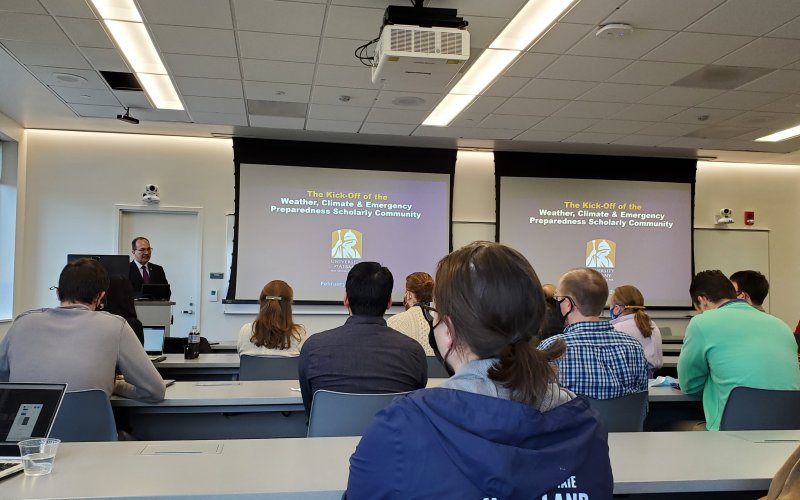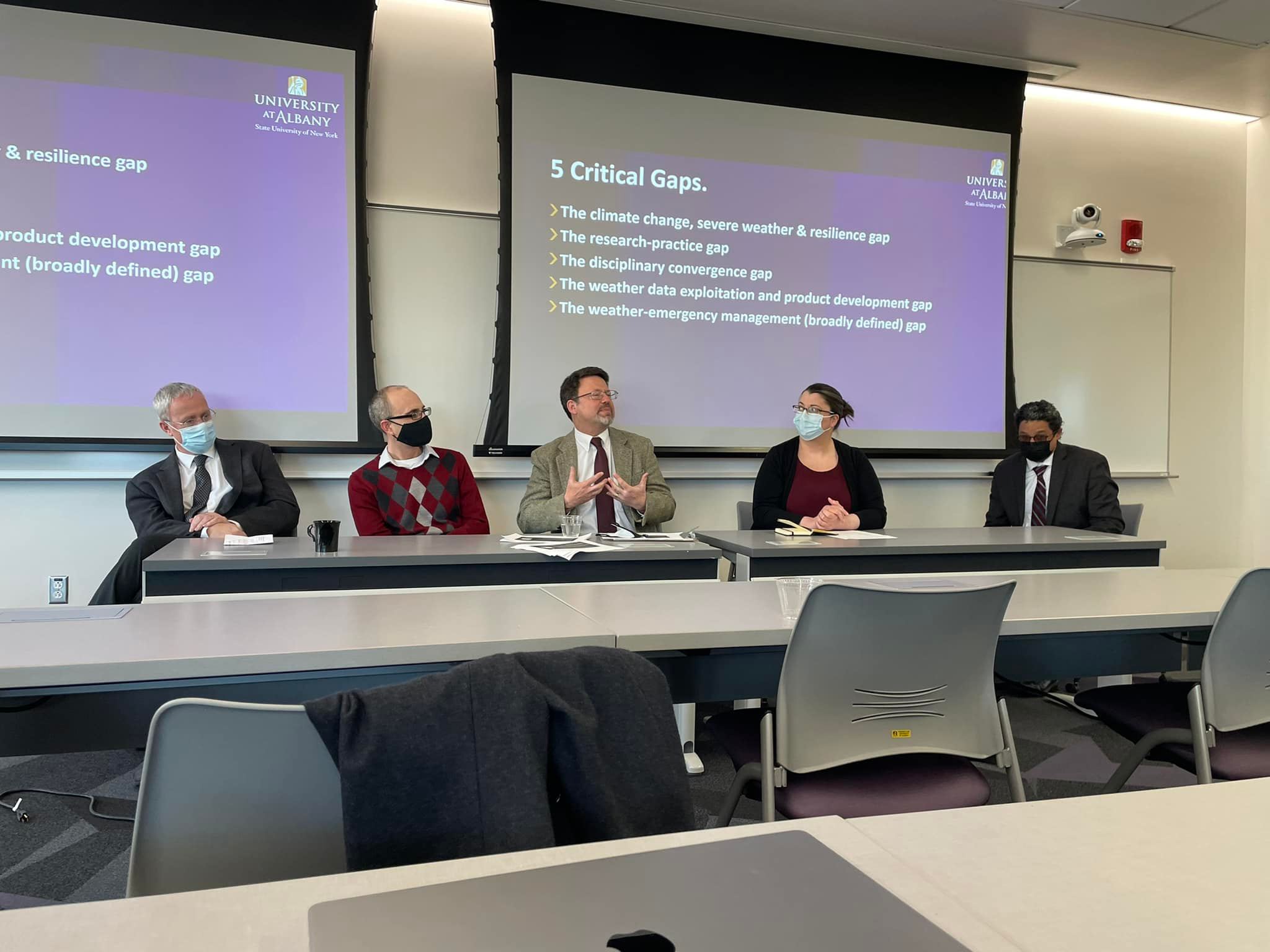Climate, Weather and Emergency Preparedness Researchers Launch New Scholarly Community

ALBANY, N.Y. (Feb. 24, 2022) – A new research and scholarly community is partnering the University at Albany’s weather, climate and emergency preparedness scientists to tackle some of the greatest existential threats facing mankind.
The Weather, Climate and Emergency Preparedness Scholarly Community launched on Friday during a kick-off meeting inside of the new Weather Map Room at UAlbany’s state-of-the-art $180 million ETEC research and development complex.
It was attended by about 40 faculty members from UAlbany’s College of Emergency Preparedness, Homeland Security and Cybersecurity (CEHC), Atmospheric Sciences Research Center (ASRC) and the Department of Atmospheric and Environmental Sciences (DAES) of the College of Arts of Sciences, all of which are jointly leading the new interdisciplinary-focused scholarly community.
President Rodríguez offered opening remarks at the event, followed by new Vice President for Research and Economic Development Thenkurussi (Kesh) Kesavadas, College of Arts and Sciences Dean Jeanette Altarriba and CEHC Dean Robert Griffin.
The kick-off also included a panel discussion titled “The Nexus of Weather, Climate and Emergency Preparedness” featuring:
- Christopher Thorncroft, director of ASRC, the NYS Mesonet and Center of Excellence in Weather and Climate Analytics (COE)
- Eric Stern, CEHC professor and faculty chair
- Ryan Torn, DAES department chair and professor
- Amber Silver, CEHC assistant professor
- Jorge Gonzalez Cruz, NOAA-CREST professor, City University of New York

“This is a really great initiative, and as some of you know, I’m very passionate about it. For the past 30 years, in one way or another, I’ve been dealing with emergency, crisis and disaster,” said President Rodríguez, an expert in the field of disaster research. “It is critical that we continue to work together, move forward and build interdisciplinary research teams to focus on these important topics.”
“As the new VPRED, my emphasis is on working on interdisciplinary projects that go across campus,” added Kesavadas. “I think this scholarly community that we are discussing today is a fantastic way to bring groups together and make a greater impact on our future.”
Last fall, ETEC officially opened on the Uptown Campus, bringing faculty from CEHC and UAlbany’s Weather-Climate Enterprise, including DAES, ASRC, the NYS Mesonet and the COE, together under one roof.
Researchers from both disciplines, two of the University’s signature strengths, are already working together on a number of projects. Highlights include partnerships through a $208 million NOAA Cooperative Institute that is focused on severe and high-impact weather, a $20 million National Science Foundation AI Institute that will advance the use of artificial intelligence and machine learning technologies to improve our understanding of weather and climate, including its societal impacts, and a UAlbany-led project to improve forecasting and communication of extreme heatwaves in New York City
The new scholarly community will expand these existing synergies to foster knowledge exchange, promote joint publication, grow extramural funding, host research forums and conferences, invent new technologies and build partnerships with government, industry, domestic and international institutions.
It follows a successful model that was launched within UAlbany’s health disparities community in 2020 and is open to all campus community members who are interested in applying their research to these disciplines.




